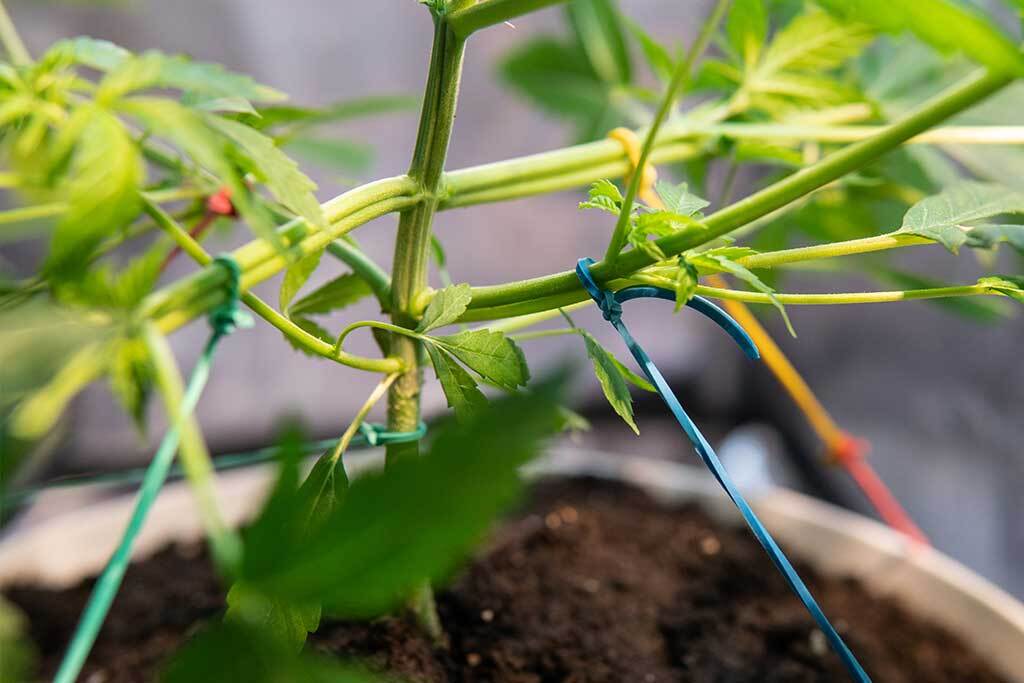
Low Stress Training (LST) Autoflowers
If there’s one thing you probably know about autoflowers is they can be far more sensitive than regular cannabis plants, due to their short natured life cycle. But, one topic that’s recently been trending amongst the growing world is the act of low stress training (LST) autoflower plants. As autoflowers become more popular, professionally and personally, many are experimenting with the best ways to grow the most maximized and high-quality yields. So, should you LST autoflower or not? We’ll answer that question and more in our ultimate LST autoflower guide.
What is Low-Stress Training
Before we cover low-stress training autoflowers, let’s refresh ourselves on what LST actually is. Low stress training cannabis plants describes the art of training your cannabis plants with low-stress techniques that manipulates canopy shape for varying benefits. Why? The idea is to disrupt the plant’s natural apical dominance or natural way of growing upward with one centra cola. By doing so you’re training the plant’s side branches to grow alongside the main cola, overall maximizing growth and weight.
Examples of LST for autos include bending branches by tying or staking, SOG or SCROG (more about that later) methods. While low-stress training techniques are common for regular photoperiod cannabis varieties because autoflowers have a short life cycle even the slightest stressor can stunt or halt growth. This is why LST for autos is somewhat debated amongst the growing world.
When Should You Start Low Stress Training Autoflowers?
Timing is essential when you are growing autoflowering plants. After planting your autoflower seeds wait until the plant has gotten through the seedling stage and developed enough foliage to allow for bending and shaping, typically around the third week of the vegetative stage. Starting early helps in creating a more even canopy, allowing for better light penetration and airflow.
How does LST help you control apical dominance?
Cannabis plants typically exhibit apical dominance, where they develop a main, central bud surrounded by smaller side branches. While some growers appreciate this natural form for its impressive central bud, this structure can lead to higher moisture retention and an increased risk of mold, especially in conditions where humidity control is challenging for beginners. Low-Stress Training (LST) disrupts this by limiting the production of the growth hormone auxin, which normally promotes vertical growth. Instead, energy is redirected to lateral growth, producing a plant with a more uniform and bushy appearance. This technique is especially useful in controlling plant height and structure in limited spaces, enhancing airflow around the buds, and reducing the likelihood of mold in denser, top-heavy colas.
Does low stress training autoflowers increase yield?
Absolutely! LST can significantly impact your autoflower yield by more than 100% in some cases. Average autoflower yields range from 30 – 150g per plant so if you want to be near the top end you have to employ training techniques like scrog and tie and bend.
Advantages & Disadvantages of LST for Autos
So far, as growers expand the use of low stress training autoflower plants we’ve collectively come across some advantages and disadvantages. Those being
Advantages of Low-Stress Training Autoflowers
- Maximize light exposure for maximized yields – With even levels of light you can seen increased bud sites to maximize yields.
- Decreased vertical space – If you’re low on ceiling space, low stress training autoflowers will help by training the plant to grow more horizontally vs vertically.
- Denser buds – Some growers report denser, fatter nugs with LST autoflower plants most likely due to increased light exposure.
- Control space & stretching – You can maximize the amount of space you have with your grow room by controlling and manipulating stretching of the plant.
Disadvantages of Low-Stress Training Autoflowers
- Could stress plant and stunt or halt growth – When not done properly, LST for autos can stunt growth or halt it completely.
- Plant stress or stunts can minimize yields and overall quality – If low stress training autoflower plants do become stressed or stunted, your yields and quality will be negatively affected.
How To LST Autoflower Plants
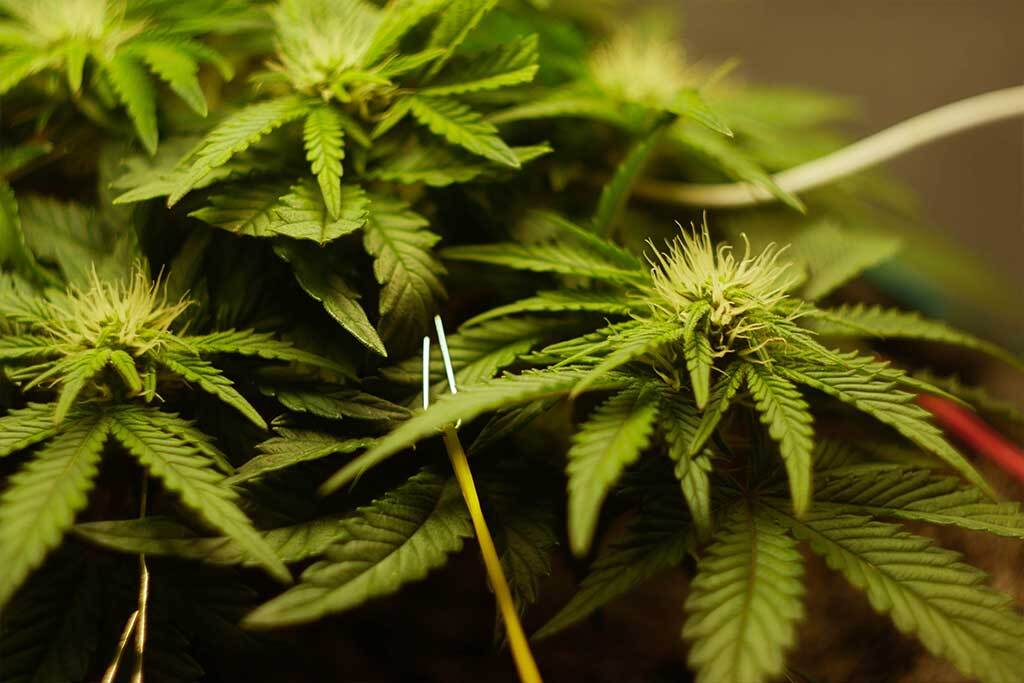
If you’re willing to take the slight risk of the disadvantages that LST for autos may cause – here are the most common ways to implement LST techniques for autoflowering plants.
LST Bending & Tie-Down Technique On Autoflowers
One of the easiest LST methods for autoflowers is the art of bending and tying down branches. It’s also one that’s preferable amongst growers since it rarely results in growth stunts or issues. To do so successfully, basically, you’ll slightly bend the top branches to become in line with the rest of the canopy. Therefore manipulating a more horizontal canopy versus vertical. By typing the branches to the edge of the pots (make holes and use green tie!) you can control the structure of the plant’s growth to maximize light exposure. Therefore, bulking up buds that normally would have been in the shadows of other branches. In turn, maximizing yields overall.
The Tie and Bend method is perfect for training individual plants. Follow these steps:
- Choose the branch: Select a strong, healthy branch that you want to train.
- Bend gently: Carefully bend the branch towards the ground. Be gentle to avoid snapping the branch.
- Secure the branch: Use soft ties to secure the branch to the pot or stake. Leave some slack for growth.
- Adjust ties: As the plant grows, keep adjusting ties to encourage horizontal growth without putting too much stress on the branches.
- Repeat: Apply this technique to other branches, shaping the plant according to your preference.
- Monitor growth: Keep an eye on the plant’s growth and make necessary adjustments to the ties.
How to ScrOG On Autoflowers
SCROG or Screen of Green references the installation of a ‘screen’ above the plant canopy to provide support and stability. The idea is, the top canopy of the plant with the additional support becomes ‘high-value’. By removing the lower branches, growers allow the plant to divert its energy to the top branches. Learn more with our complete guide to scrog growing autoflowers.
Screen of Green (ScrOG) focuses on creating a uniform canopy to maximize light exposure. Follow these detailed steps:
- Install a screen: Place a screen 20-25 inches above your pots. The screen should have squares of about 2 inches to allow branches to pass through.
- Weave the branches: As your autoflowers grow, gently weave the branches through the screen’s holes. Be cautious not to snap the branches.
- Maintain and tuck: Continue tucking the branches as they grow to ensure an even canopy. This maximizes light exposure to all parts of the plant.
- Prune lower growth: As the canopy develops, prune lower branches and leaves that don’t receive enough light. This helps in focusing the plant’s energy on the top buds.
- Monitor and adjust: Keep an eye on the plants’ growth, and raise the screen if necessary to avoid stress or damage to the branches.
- Harvest: Once the buds are fully developed and ready, harvest the top portion and allow the lower buds to mature further before final harvesting.
How to SOG Autoflowers
SOG or Sea of Green method is another that’s common for photoperiod and autoflowering plants. To learn more about the simple LST technique and how to integrate it for your crops, read our complete guide to SOG growing autoflowers.
You should also keep in mind that certain strains and genes will respond or react differently to LST techniques than others. For example, 45 day autoflowers are well suited to the SOG method because they mature so quickly that using techniques such as topping doesn’t allow for enough recovery time.
Sea of Green is ideal for cultivating numerous plants in a limited space efficiently. Follow these steps:
- Plant closely: Plant your autoflowers close together, typically around 1 plant per square foot.
- Prune selectively: Prune the plants to ensure that they don’t compete too aggressively for light or space.
- Monitor growth: Keep an eye on how the plants are developing, ensuring that none are being overshadowed or stressed.
- Harvest in stages: As plants mature at different rates, harvest in stages. This allows less mature plants to receive more light and nutrients.
Which is the Best LST Method for Autoflowers?
Choosing the best LST technique for your autoflowers depends on your goals and the resources at your disposal.
If you are a commercial grower or cash cropper looking for a low maintenance approach with a focus on efficiency for a large number of plants, then the Sea of Green (SOG) technique might be your best bet. It’s great for efficiently utilizing large grow spaces and optimizing the quantity of the harvest. The low maintenance aspect of SOG also allows for better management when dealing with a considerable number of plants.
On the other hand, if you are a home grower aiming to maximize the yield per plant, the Screen of Green (ScrOG) and Tie and Bend approaches are likely to give you the best results. Both ScrOG and Tie and Bend are excellent for concentrating efforts on a smaller number of plants and achieving the highest yield possible from each, however these approaches are more time consuming.
Tips for Successfully Low-Stress Training Autoflowers
In general, for any autoflower low-stress training techniques – be sure to keep these best practices in mind.
- Time LST right: You should do the most of your LST for autos in the first 4 weeks of the plant’s life cycle. But, don’t do it too often either. It’s recommended to implement low stress training for autoflowers once in the first 4 weeks, and never during flowering.
- Use thick twine: To avoid damaging your plant’s fragile young branches, use thick twine versus ones that can easily slice or cause breakage.
- Only during veg: You should only low stress train your plants during the vegetative stage, once they reach the flowering stage let the plants focus on producing buds.
- Choose a suitable strain: Do your research and chose a an autoflower strain that is well suited to LST training such as Ultra Lemon Haze.
Improving Autoflower Yields with LST
With the knowledge you’ve gained today, now you know how to improve and even maximize autoflower yields with LST. Plus, the best tips and tricks to follow to do so successfully. What always helps optimal growth is high-quality seeds to start with. So, look no further than AutoSeeds for top-notch autoflowering seeds and genetics. Shop our collection now, or browse our growing guides for more best practices and growing advice.
Is LST or Topping Better for autoflowers?
For autoflowers, LST is typically more suitable due to their short life cycle. Topping, being a form of HST, may stress autoflowers too much. With such as short vegetative stage the risk here is that you stress the autoflower too close to the flowering phase and growth is delayed or stunted.
Does low stress training slow growth?
Low Stress Training is used to shape the growth of plants and increase yield. It is generally a very gentle training technique when compared to methods like topping and fimming, but like any form of training, if applied too aggressively, it can temporarily slow down a plant’s growth. The key with LST is to manipulate the plant’s structure without causing significant stress or damage, allowing for healthy development while gently guiding its form and size.
How long does low stress training take to recover from?
After low stress training if you start by bending your autoflower plant, there might be a brief period, typically a day or two, during which growth could slow as the plant adjusts, especially if any stems were inadvertently damaged. However, because LST is designed to be a gentle method of training, plants often experience minimal to no significant recovery time and quickly resume their normal growth patterns.
How Do I Stop My Autoflower from Getting Too Tall?
To keep autoflowers from getting too tall, employ the LST techniques discussed above, particularly the Tie and Bend method. This promotes a bushier growth rather than vertical height.
2 Replies to “Low Stress Training (LST) Autoflowers”
Leave a Reply
You must be logged in to post a comment.

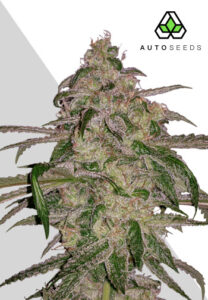

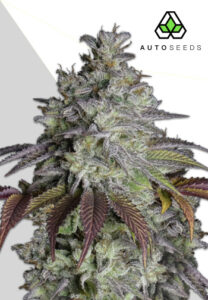
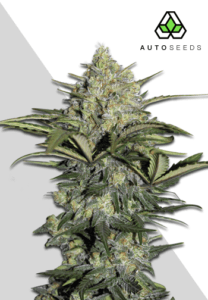
Sup mate my name DR GUNJAHH A.K.A TEEREXX hahah from the Amazon haha na
I’m from NZ and known to many as teereexx as I
I have created my own Jurassic park
Ilove learning ur guys advertisements of auto flowering I’m wondering if I could have some more story’s of other things u have on all sorts of growing ways ..as I love learning new ways all the time plus’s wondering how I’m able to get seeds and info of different strands u have ….hopefully tha ks
Hey mate , hows your Jurassic park ? Hope you got the info you were after.